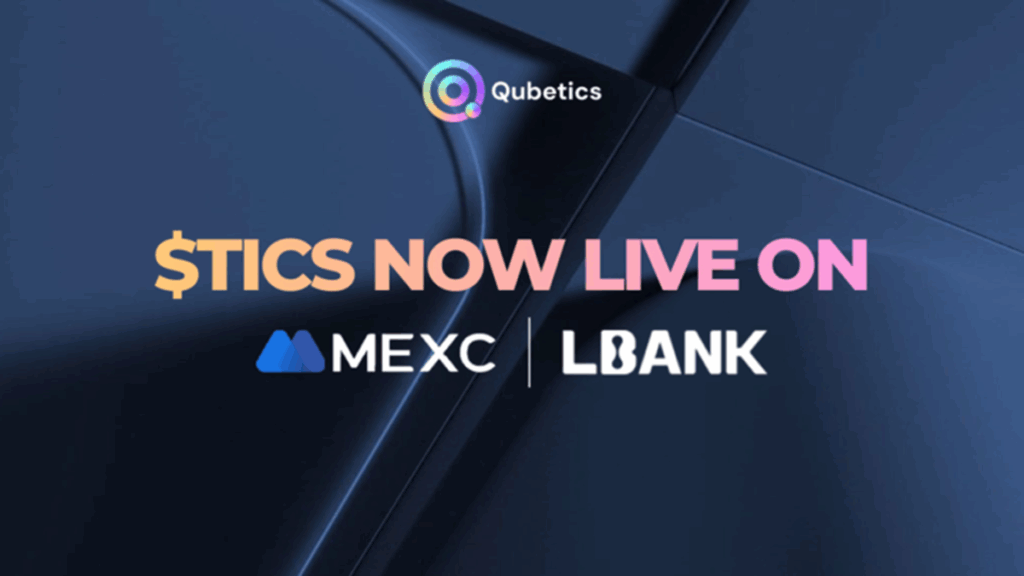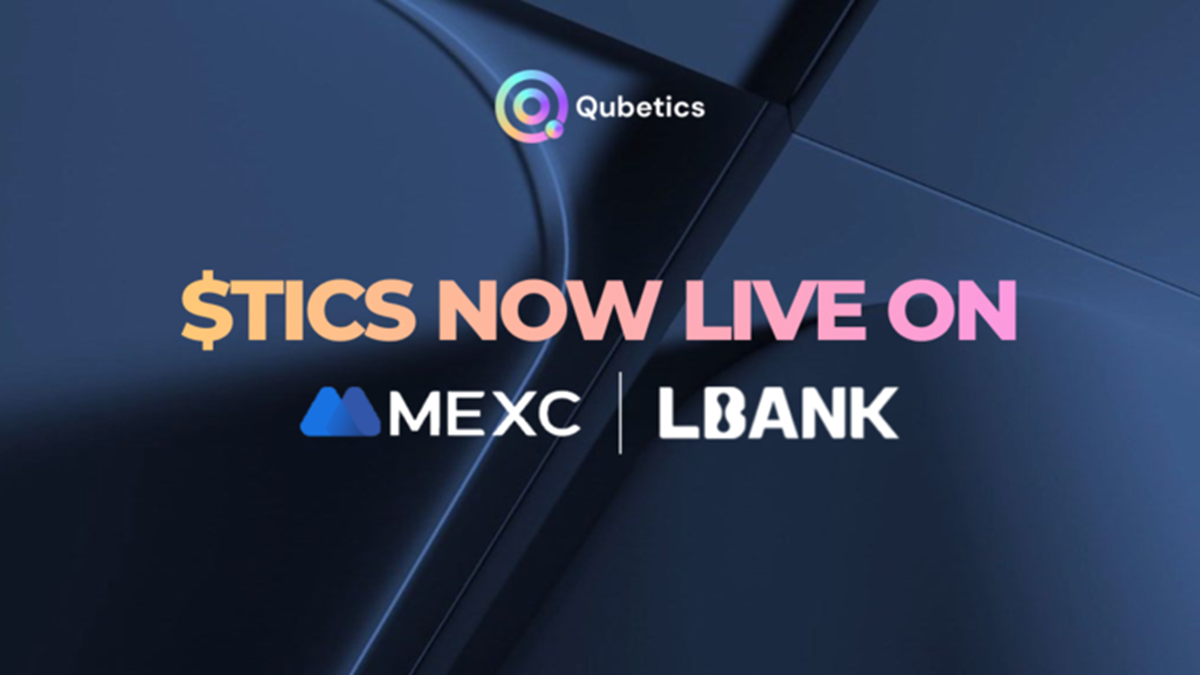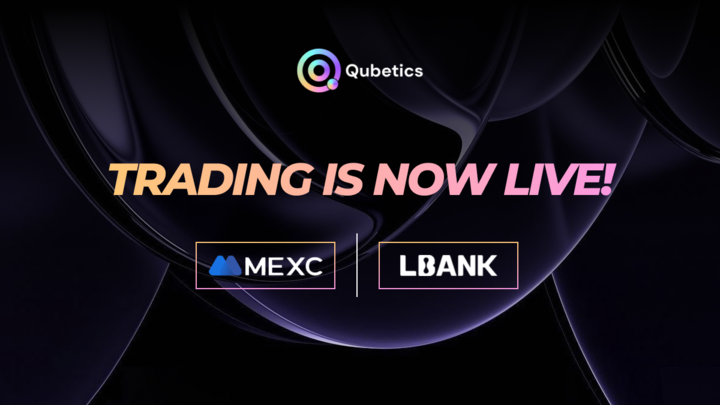In 2025, which project is truly positioned to explode: Qubetics, Hedera, or Avalanche? Each is making a decisive move. Qubetics ($TICS) has launched on MEXC and LBank, with SWFT Bridge offering decentralized trading access. Notably, it has QubeQode and the Qubetics IDE, AI-powered tools designed to simplify smart contract creation and increase developer participation.
Meanwhile, Hedera is gaining institutional attention. A potential green blockchain ETF and notable whale activity have revived interest in HBAR, with significant on-chain transfers suggesting quiet accumulation. Avalanche is showing a strong technical structure. It is trading within a bullish pennant, supported by a surge in daily transactions that recently surpassed 1.5 million.
With all three advancing on different fronts, innovation, adoption, and momentum, the question of the best crypto to invest in July 2025 becomes more relevant than ever. Qubetics enters that conversation with a clear developer-first advantage.
QubeQode and the Qubetics IDE: AI-Powered Blockchain Development
QubeQode is a drag-and-drop development tool that simplifies the process of building decentralized applications (dApps) without requiring extensive coding knowledge. Traditional smart contract development typically requires experience in programming languages such as Solidity or Rust. QubeQode removes that barrier by using AI to guide users through the creation and deployment of contracts with minimal code.
The interface allows users to select components, set logic, and deploy on-chain within minutes. It also includes a live testing environment, allowing users to simulate contract behavior in real-time before going live. This improves accuracy, reduces failures, and speeds up the entire development cycle.
Alongside QubeQode, the Qubetics Integrated Development Environment (IDE) offers a complete suite for both new and experienced developers. It includes a code snippet library, built-in documentation, and AI tools that detect errors, optimize code, and suggest improvements based on gas usage and structure.
Together, these tools make Qubetics a strong contender for the best crypto to invest in July 2025, especially for those focused on Web3 development.
DPoS Security and Governance in Qubetics
Qubetics operates on a Delegated Proof of Stake (DPoS) consensus mechanism, combining speed with participatory governance. In this model, token holders can vote for delegates who validate transactions and maintain the network. This process helps eliminate network congestion while supporting democratic decision-making.
The selection system is structured around two groups: validators and delegators. To become a validator on the Qubetics network, a user must hold a minimum of 25,000 TICS tokens. Validators are responsible for producing blocks and maintaining consensus. Delegators, who must hold at least 5,000 TICS tokens, vote by delegating their tokens to validators. In return, they earn a share of the 30% annualized yield depending on the performance of the validator they support.
This structure enhances both network security and decentralization while aligning economic incentives. It also ensures the community has a voice in shaping protocol updates, making Qubetics a prime candidate when evaluating the best crypto to invest in July 2025 with a focus on dpos security. Those interested in the broader mechanics of DPoS can review an in-depth overview.
Qubetics Launches on MEXC, LBank, and SWFT Bridge
On July 30, 2025, at 8:00 AM UTC, Qubetics concluded its public sale, raising over $18.4 million and distributing 517 million TICS tokens to more than 28,500 participants. Following this milestone, Qubetics achieved live trading on MEXC and LBank for $0.40, representing a sharp 20% increase from the last stage of the presale. The token also became available via SWFT Bridge, offering a decentralized option for cross‑chain swaps.
By expanding across both centralized and decentralized venues, Qubetics significantly increased accessibility. The first airdrop distribution is scheduled exactly one month after launch, on July 30, 2025.
These developments support Qubetics’ growing profile as the best crypto to invest in July 2025, blending strong presale participation, broad circulation among holders, and immediate market access.
Analyst Price Forecasts Signal Strong Upside for Qubetics
Market analysts are projecting sharp price targets for $TICS, ranging from $1 to $15, following the mainnet launch of Qubetics. These forecasts reflect growing confidence in its developer ecosystem and the rollout of its infrastructure. With trading now live, Qubetics is firmly positioned among the best crypto to invest in July 2025.
Hedera Eyes ETF Support as Whale Activity Surges
Hedera (HBAR) has re-entered the spotlight due to potential inclusion in a proposed green blockchain ETF expected to launch in late 2025. This development could drive institutional capital into HBAR, further boosting its utility in low-energy Web3 infrastructure. The project recently saw over 210 million HBAR tokens move on-chain, while 50 million were transferred off Coinbase into cold storage. These movements suggest increased accumulation by large holders. Meanwhile, HBAR has also gained traction through its role in launching the Australian Digital Dollar ($AUDD) and adding native USDC support.
The Hedera network co-chaired a Washington D.C. policy roundtable in partnership with Chainlink and global consulting firms, reinforcing its focus on institutional integration and regulatory readiness. If these trends continue, Hedera could emerge as a key player in discussions surrounding the best cryptocurrency to invest in by July 2025.
Avalanche Builds Momentum with Bullish Technicals
Avalanche (AVAX) is currently trading above $17.80 and is showing signs of forming a bullish pennant, a classic setup indicating the potential for a breakout. The asset is already up over 10 percent this week, with growing trading volume and on-chain activity offering further support. Daily transactions on the Avalanche network recently exceeded 1.5 million, the highest volume in over a year. This surge, if sustained, may act as a precursor to price acceleration, especially as the broader market recovers.
Analysts have identified a key resistance area near $19.78, with further upside potential to the $25 level if the trend confirms. AVAX is also rebounding from a long-standing demand zone between $16 and $17, making this a technical inflection point. From a network perspective, Avalanche is benefiting from renewed development activity and deeper DeFi integrations. As a result, it remains in strong contention among projects competing for the title of best crypto to invest in July 2025.
Conclusion: What Sets Qubetics Apart?
While Hedera focuses on regulatory readiness and Avalanche demonstrates strong technical setups, Qubetics differentiates itself through development accessibility and long-term infrastructure value. With QubeQode and its AI-powered IDE, it provides a gateway for non-developers to enter Web3 while still supporting advanced use cases.
Moreover, its DPoS-based governance ensures alignment between token holders and network operations. By requiring only 5,000 TICS tokens to participate as a delegator, Qubetics opens the door to broader participation. Combined with its listing on MEXC, LBank, and SWFT Bridge, this accessibility extends across both technical and financial layers.
These capabilities not only support decentralization, they also help scale it. As new users enter the ecosystem and development activity increases, Qubetics could be the best crypto to invest in July 2025, based on its utility, adoption, and analysts’ predictions.
For More Information:
Qubetics: https://qubetics.com/
Twitter: https://x.com/qubetics
Frequently Asked Questions
What is QubeQode in Qubetics?
QubeQode is a drag-and-drop development interface that allows users to build and deploy smart contracts without needing advanced coding skills.
How does Qubetics IDE support blockchain developers?
The IDE features AI-driven tools for code generation, optimization, and error detection, enabling users to write smart contracts more efficiently and accurately.
What is the minimum requirement to become a Qubetics validator?
A validator must hold at least 25,000 TICS tokens and is responsible for producing blocks and maintaining network security.
What does being a delegator in Qubetics entail?
Delegators hold at least 5,000 TICS tokens and earn rewards by supporting validators. They participate in governance through voting.
Is Qubetics available for decentralized trading?
Yes, Qubetics is now live on SWFT Bridge, offering decentralized token swaps in addition to centralized listings on MEXC and LBank.
Summary
Qubetics has officially launched its $TICS token on MEXC and LBank, with decentralized trading supported via SWFT Bridge. The platform’s AI-driven tools—QubeQode and the Qubetics IDE—make blockchain development more accessible and efficient. Alongside this, Qubetics employs a Delegated Proof of Stake (DPoS) model, enabling community-led governance through validators and delegators. Meanwhile, Hedera is gaining attention due to institutional activity and potential ETF inclusion, and Avalanche is showing bullish technical signs with rising transaction volume. These developments position all three as key contenders in the race for the best crypto to invest in July 2025.
Press releases or guest posts published by Crypto Economy have been submitted by companies or their representatives. Crypto Economy is not part of any of these agencies, projects or platforms. At Crypto Economy we do not give investment advice, if you are going to invest in any of the promoted projects you should do your own research.








